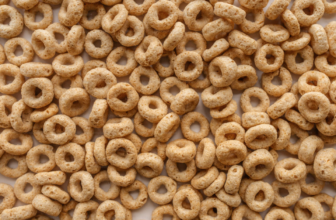
[adinserter block=”2″]
*Affiliate Disclosure
It’s the age-old question, which is better — carbon steel vs. stainless steel vs. cast iron. Okay, maybe it’s not an age-old question, maybe you’ve never even considered it until you noticed your pans looking a little sad around the chipped edges. But now that you have, we’re here for you with firsthand, chef-tested takes on what’s what, when to use each cookware material and why.
Back when we were young and green in the kitchen, our nonstick pan was our biggest workhorse, and cast iron was the pan we accidentally washed at Grandma’s (or ate hipster mac and cheese out of at a restaurant). But we’re wiser now. And we know that not only is old, chipped, beaten up nonstick a no-no in the kitchen, but that we need – nay, want… NAY… deserve! – chef-quality cookware in the kitchen.
As for what that means…… help?
Want more top picks? Sign up for the newsletter for more well-researched, non-toxic living guidance and smart wellness advice.
Here’s the Difference Between Carbon Steel, Stainless Steel and Cast Iron
We’ve done the research and put each of these cookware types to the test. Like in the real world and in real kitchens and not just for a day or week — years. And by we, we mean our in-house trained chef, Laura Klein.
Here’s what we’ve learned: cast iron is a classic for a reason. But it’s not the only heavy-duty pan you need in the kitchen. Stainless is a lighter, more maneuverable option, while carbon steel offers the best of both worlds. It’s no wonder Laura and chefs worldwide love it so much.
However, each material offers unique pros, which is why Lisa McManus, Executive Editor of America’s Test Kitchen Reviews, says she has one of each kind of skillet … and we agree 100%. Depending on what you’re cooking, each one has a place.
Carbon steel happens to be one our team’s fave for its ability to heat up quickly (which cast iron does not), sear and its maneuverability. Stainless steel is another indestructible workhorse and we love it for its ability to brown evenly.
“Because they’re made from different materials, they perform differently, meaning they heat and cook differently,” she explains. “Depending on what I’m cooking I’ll choose one or the other.”
But depending on your cooking style, you might find that one is better suited to your kitchen. Want to know which? Read on!
PSST… If you have a specific question on what might be best for your particular cooking style, drop it in the comments! Laura will give you her expert opinion.
The Pros of Cooking with Cast Iron
Cast Iron Has Amazing Heat Retention
It’s no surprise that cast iron has been a favorite for centuries (is it bad that we’re really hoping we win out against our sister when it comes to inheriting our grandma’s?) It’s amazing at heat retention, and whether well seasoned or enameled, like Staub, it’s naturally nonstick. (OK, not as nonstick as that toxic stuff, but we’ll take a bit of sticking over water pollution and endocrine disrupting chemicals any day of the week.)
Excellent for Browning And Searing
McManus notes that cast iron is “terrific when you want a lot of retained heat for serious browning and cooking, like steak, where you can heat up the pan to 500 degrees in the oven, drop in the steak, and get an amazing deep golden crust on the surface, while the interior stays pink and juicy.”
She also loves cast iron for cornbread, giant cookies (like our gluten-free chocolate chip skillet cookie), and other baked goods that should be crisp on the outside and tender within. (Psst, if you’re into baking, see our chef-tested picks for non-toxic bakeware.)
The Cons of Cooking with Cast Iron
Cast Iron Is Heavy and May Have a Rough, Uneven Surface
Of course, there are a few downsides to cast iron. Rachel Diener, Chef de Cuisine at two-time James Beard Foundation Semifinalist, Heirloom Restaurant, in Lewes, DE, notes that cast iron tends to have a “rough, uneven surface compared to a stainless or carbon steel pan, which can cause sticking when doing tasks such as frying an egg or making pancakes.”
May Interact With Acidic Ingredients
And especially if it’s not well seasoned, cast iron can interact with acidic ingredients, like tomato sauce, contributing to off flavors.

Staub
Of course, both of these issues are offset when a pan is covered in a crystal enamel coating, like those from Staub. But even then, cast iron is really heavy, which can make it difficult to maneuver for things like sautéing.
This can be a bonus, notes McManus, who likes “the extra arm strength I get from hoisting cast iron around. Who needs a gym if you cook with cast iron?”
But cast iron also likes to be cooked with regularly to stay well seasoned, so if you’re only going to use it every once in a while, it’s perhaps not the best pan for you.
The Pros of Cooking with Stainless Steel
Light, Durable and Indestructible
Stainless steel is far lighter than cast iron, which makes it an excellent kitchen workhorse. Indeed, while McManus loves all of her pans, she notes, “if I had to choose just one, I’d say stainless steel.”
“In the test kitchen we use this pan in so many ways: as a frying pan, of course, but we also bake pies in it, we roast chicken in it, make shepherd’s pie with mashed potatoes that we finish by browning it under the broiler, the list goes on and on,” McManus says.
“With its metal handle, this pan can go right in the oven or under the broiler. It’s indestructible and incredibly versatile. It’s the pan I’d take to a desert island because it will last forever, and won’t rust, even in the salty air.”
Of course, she adds that not just any stainless will do. She likes tri-ply or “fully-clad” stainless, which essentially means that the pan is made of three layers of metal – steel sandwiching a central aluminum layer – all bonded together.
Stainless Steel Browns Evenly and It’s Non-Reactive
“Aluminum transfers heat very fast; steel is slower, but it holds heat better,” explains McManus. “The combined result is a pan that cooks steadily, and evenly browns everything to perfection.
Also, having the surface made of stainless steel means that it’s non-reactive, so it will never rust or react to acidic ingredients or change the flavor of anything you cook in it. And because it’s plain metal, you can scrub it hard, and use metal utensils, and it will not get damaged or wear out like a nonstick pan.”
Our EIC Laura Klein is a big fan of the stainless steel collections from both Demeyere and Made In. Both offer a five-ply stainless – the perfect kitchen workhorse that’s durable, easy to handle, and forgiving of metal tools on its surface.

Demeyere
Demeyere has two collections: the Atlantis with seven layers of metal and the Industry 5 with five.
“The Atlantis has a little more weight” she says, noting that while it’s a little pricier, the superior design, heat conduction, retention and ease of cleaning that comes with it are worth it. Both collections come with Demeyere’s Silvinox finish, which she also feels makes these pans a worthwhile investment (read more about it below).
The Cons of Cooking with Stainless Steel
Stainless Steel Can Be Tough to Clean
One of the downsides of cooking with stainless steel is that depending on the construction, they can be tough to clean and stain easily.
To help overcome the cleaning and sticking problem, Demeyere has created a unique Silvinox finish that allows you to cook with less fat and makes the pans easier to clean.
Requires More Fat to Keep Food From Sticking
This surface also usually requires more fat to keep your foods from sticking to the pan. So if you like to cook with minimal fat, stainless steel may not be right for you.
The Pros of Cooking with Carbon Steel
Light, Seasonable, Requires Less Oil
Carbon steel is kind of the forgotten middle child of the pot and pan world that’s “really big in Europe.” (No, seriously, European chefs swear by it.)

Made In
“Carbon steel is preferred due to the rapid nature of our work,” says pro chef Diener. “Carbon steel pans retain heat well, are oven safe, and they heat and cool quickly. This allows for better pan control, which is an essential element of good cooking.”
In many ways, carbon steel offers the best of both worlds: a seasonable surface like cast iron, but a lighter, more maneuverable weight closer to stainless. According to Chip Malt of Made In Cookware, the pores of carbon steel are smaller than cast iron, meaning that you actually need less oil to achieve that perfectly seasoned surface (you can read more about Made In cookware in our profile).
Season your carbon steel for an hour in the oven before using, suggests George Steckel of Made In Cookware. After that, to ramp up the seasoning, “You can follow the same oven seasoning process or just stovetop seasoning, which would be putting your pan over medium-low heat, letting it get hot, and then applying a thin layer of oil and then gradually increasing the temperature.”
McManus agrees, noting that “once you are using them regularly,” the maintenance for carbon steel and cast iron is “exactly the same.”
“The main difference is that most carbon steel pans are sold completely unseasoned and raw, and most cast iron pans come factory preseasoned,” she adds. “That means you have about a six month head start with the preseasoned cast iron, so you can just start cooking in the pan right away. The uncoated carbon steel pan has to be given an initial seasoning, then it might take a few months to really acquire a solid layer of seasoning.”
“We love carbon steel for classic French omelets,” says McManus, “where you’re going to roll the finished food out of the pan — that’s hard to do with a heavy cast iron pan (and the high straight sides of many cast iron pans make this a little harder, too).” She also loves the natural seasoning that builds up on carbon steel, much as it does with cast iron.
We love carbon steel as the perfect high-heat stovetop cooking vessel. Need a frying pan? Want to stir fry in a wok? Carbon steel’s your girl.
The Cons of Cooking with Carbon Steel
Much like cast iron, carbon steel is reactive to acidic foods. So be wary of stewing tomatoes in your carbon steel pan (use your stainless). Instead, choose carbon steel for things that need quick, high heat.
Our Favorite Stainless Steel, Carbon Steel, and Cast Iron Product Picks
Staub
Staub
We love Staub’s enameled cast iron, rich in generations of history. This heavy-duty material grew up in the culinary capital of France, and today, thanks to innovations from Staub, these heavy Dutch ovens allow even heating, excellent heat retention, and phenomenal moisture thanks to the little spikes on the inner surface of the pot lids.

Image courtesy of Laura Klein + Organic Authority Studio
You may be wondering why Le Creuset isn’t on this list. They are a great brand and we’ve tested many of their pots and pans, but we prefer Staub’s more durable dark black enamel coated interior. Studded with quartz particles, it creates a subtle textured surface that we feel promotes better browning and is far better at searing. In my experience, I consistently had trouble getting a good sear on any veg or meat with Le Creuset.

Laura Klein + Organic Authority Studio
It’s also dishwasher-safe and easier to maintain. It doesn’t seem as sensitive to heavy metal utensils if someone other than you decides to use them. We found that the light cream enamel coating of Le Creuset isn’t as durable. It turns brown after you’ve cooked with it for a while, is tougher to clean, and overall is more delicate and easier to scratch.
We also hot (so to speak) for their sustainability practices and the fact that they do third party testing. You can read more about Staub here.
5.5″ Round Coquette, Black Matte $379.99*:
- Available in 13 Colors and 10 Sizes
- Dishwasher Safe, Hand wash Recommended
- Oven Safe Up to 500 F
- Induction Compatible
*Price at time of publish
View the original article to see embedded media.
Made In Carbon Steel

Made In
When we’re high-heat cooking and want good heat retention and quick mobility, we’re big fans of Made In’s carbon steel. It’s great for searing veg or meat, going from stove top to oven, and back with ease (read: without the weight of cast iron). It heats up and cools quickly.
Made In partners with the best producers around the globe to bring us carbon and stainless steel with the utmost transparency and attention to climate concerns. It even offers a pan recycling program in partnership with Habitat for Humanity, to offset waste as you seek out the best pans on offer.
Blue Carbon Steel Frying Pan Seasoned Set $219*:
- 12″ and 10″ Frying Pans
- Hand Wash Only
- Oven Safe Up to 1200 F
- Induction Compatible
*Price at time of publish
View the original article to see embedded media.
Made In Stainless Steel

Made In
Made In’s high-quality stainless steel cookware is crafted in Italy with an aluminum alloy and aluminum core that’s surrounded by 5 layers of premium metals which heats evenly (no hot spots) and retains heat. It’s also lightweight, and easy to maneuver on the stove. The long handles keep your hand away from the heat source while the curved walls of the pan make it easy to flip food.
We love that this pan can easily go right from the stovetop to the oven, which is great for things like searing meats and vegetables and then finishing them off in the oven. And cleanup is surprisingly easy- for a stainless steel pan.
Stainless Clad Frying Pan 3-Piece Set $299*:
- 8”, 10” and 12” Frying Pans
- Dishwasher Safe
- Induction Compatible
- Oven Safe Up to 800 F
View the original article to see embedded media.
Alva Enamel Coated Grill Pan

Laura Klein + Organic Authority Studio
We recently tried out some cookware from Alva, a Belgian company that’s been around since 1949. They have a real commitment to sustainability – the founder used scrap metal left over from World War II to make his first pans!
We tested a few different pans, including their ceramic coated nonstick Maestro Frying Pan. It’s a classic design, but the nonstick coating is really impressive. Eggs and fish slide right out of the pan, no problem. What we liked most was the extra cooking surface – the pan has straight sides, so you get 20% more space than usual.
Another favorite was the Nori Grill Pan. This is a cast iron pan with deep ridges, so you can sear meat and veggies and get those beautiful grill marks everyone loves. It worked great on everything we tried including burgers, buns, zucchini, eggplant, baby broccoli, and chicken, and it can even go in the oven up to 482 F.
Alva also has a unique oval-shaped Nonstick Fish Pan that we had a lot of fun with. It’s perfect for cooking whole fish, and it has two pour spouts on the side that make it easy to add sauce.
Nori Grill Pan $189*:
- 11” Diameter
- Handwash Only
- Induction Compatible
- Oven Safe Up to 400 F
View the original article to see embedded media.
Demeyere Stainless Steel

Image courtesy of Demeyere
For quick sautéing in a pan that doesn’t need to be seasoned, or simply for a dish boasting an acidic component like tomatoes or red wine, the non-reactive stainless steel from Demeyere and Made In are our go-tos. Klein recommends a fry pan/saute pan, or saucier as a staple for pan sauces, as well as an 8-quart stock pot for soups, bone broths, and tomato sauces. This size is ideal for batch cooking or feeding a crowd.
Klein loves the silvinox finish on the Demeyere cookware: It’s a unique electrochemical surface treatment (not a coating!) that enriches and purifies the stainless steel surface, providing a slicker finish that allows food to release with ease, not to mention rendering it far easier to clean. It also keeps your pans looking silvery white longer (you can read more about Demeyere in our clean cookware roundup here).
Demeyere Atlantis:
- Available in 9″ $249.99*, 11″ $279.99*, and 12.5″ with Helper Handle $319.99*
- Dishwasher Safe
- Oven and Broiler Safe to 500 F
- Induction Compatible
*Price at time of publish
View the original article to see embedded media.
P.S. Did you know? Organic Authority has its own nutrition and wellness shop to meet your needs and help you take control of your health. Shop clean supplements for energy, sleep, inner beauty for skin support, protein, workouts, pantry items and more. Shop The Organic Authority Shop now.
Read More on Organic Authority

Image courtesy of Caraway Home.
GreenPan Slow Cooker Review: Chef Tested for Easy, Cozy Meals
Stone, Steel or Cast Iron: Which Is Best For Homemade Pizza?
6 Best Non-Toxic Bakeware Materials and Top Brands
*Note! This article contains affiliate links that are independently sourced and vetted by our editorial team, which we may earn a commission on. This helps us reduce the number of ads we serve on Organic Authority and help deliver you a better user experience. We are here to help you navigate the overwhelming world of consumer products to source and uncover thoughtfully made, conscious clean products.
[adinserter block=”2″]
Source link







